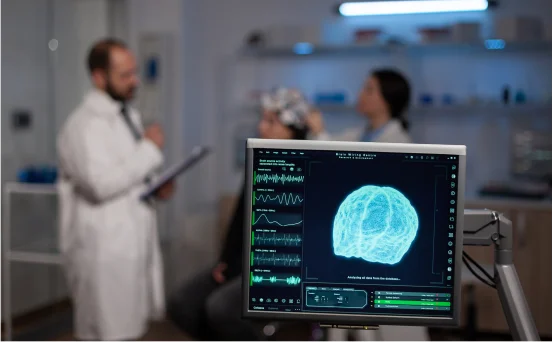The procedure for removing brain tumors can be daunting, but understanding the procedure step-by step will ease fears and prepare patients as well as their families for the future. The brain tumor surgery procedure is a very precise and well-planned operation which aims to eliminate the entire or a portion of the brain tumor. Based on the location of the tumor and the type, the treatment will differ, but the process generally follows a prescribed path that includes examinations prior to surgery as well as the surgical procedure itself as well as post-surgery treatment.
Pre-Surgery Evaluation
Prior to the procedure the patient is subjected to an extensive medical examination. It usually involves neurological tests and imaging tests, such as MRI as well as CT scans, and occasionally the use of a functional MRI as well as a PET scan to identify crucial brain regions like movements or speech. Heart tests, blood tests and an anesthesiology consult are all performed to make sure the patient’s health is sufficient to undergo surgery.
The surgeon will discuss the procedure, risks, and the expected results. In certain instances it is possible to have a biopsy taken prior to the surgery in order to identify the type of cancer. This can help the surgeons determine the most efficient and safe procedure.
Admission and Preparation
Patients typically go in the hospital one day prior to or in the morning prior to surgery. The head is shaved either partially or completely, based on the nature of the procedure. Nurses may use the intracavate (IV) line to deliver medication and fluids. An anesthesiologist will visit the patient for a discussion of the procedure they’ll follow to be monitored and sedated throughout the procedure.
In certain cases, particularly when the tumor is located near an area of concern the patient may be awake for a part of the procedure to help the surgeon to avoid harming movements or speech centers. This is known as an awake craniotomy and is performed by a specialist who monitors and treats.
The Surgical Procedure
The most commonly performed surgery is the craniotomy which is a procedure where the surgeon removes part of the skull in order to gain access to the brain. Utilizing high-resolution imaging and technology for navigation surgeons carefully identify the tumor, and then begins to take it out.
Based on the size of the tumor and location, the objective is either total removal (total Resection) as well as partial removal (subtotal debulking or resection). Brain tissue can be very delicate, which is why surgeons employ specific tools like ultrasonic aspirators, microscopes, and laser systems to eliminate the tumor with accuracy.
During the entire procedure the brain activity of the patient is carefully monitored. If the procedure is an in-person process, patients could be required to talk or move their limbs to assist the surgeon in guiding them away from the most critical areas.
After the tumor has been treated, the skull is repaired and secured using screws or plates and the incision sealed using sutures or staples.
Recovery Room and Hospital Stay
Following surgery The patient is then taken to a recovery area and later taken to an inpatient facility (ICU) or neuro high-dependency unit to monitor. Vital signals, brain pressure and neurological function are closely recorded during the initial 24 – 48 hours.
The duration of hospitalization depends on the severity of the procedure and the patient’s healing. The majority of patients stay for 3-7 days. In this period they might collaborate with physical therapists occupational therapists, or speech therapy to help them regain their function in the event of a need.
Post-Surgery Care and Rehabilitation
After discharge, rehabilitation can continue at the home or in rehabilitation facilities. Visits to follow-up are scheduled for wound check-ups, MRI scans, and to discuss the results of lab tests when tissue was taken to be analyzed. Patients may require additional treatment, such as chemotherapy or radiation therapy, particularly if the tumor is malignant.
Common symptoms that occur following surgery are nausea, fatigue, headaches or small swelling. They usually improve after some weeks. Some patients may experience temporary or permanent changes in speech, memory, or mobility–rehabilitation therapy helps in managing these.
Monitoring for life is usually required particularly for patients suffering from cancerous or recurring tumors. Regular brain scans are helpful in detecting any indications of regrowth earlier.
Conclusion
The surgery for brain tumors is a highly skilled procedure that requires meticulous preparation, expert surgery execution, and committed post-operative care. Knowing the entire procedure from preparation to post-operative recovery – can assist in reducing anxiety and improving confidence when it comes to the treatment.
While the path may seem difficult at first, the latest advances in technology for surgery imaging, recovery, and treatment have made brain tumor surgery more secure and more efficient than ever before. With the proper medical team and the right support system, a lot of patients are able to live happy, fulfilled lives following surgery.























